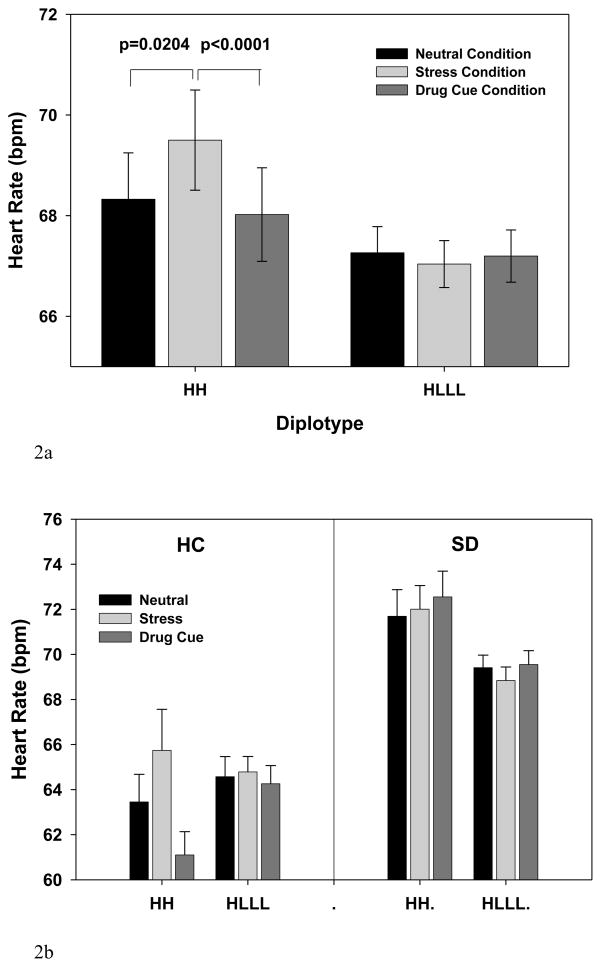Figure 2.
Baseline adjusted mean heart rate response (and SE) during stress, drug cue and neutral conditions for the HH and HLLL diplotypes and the HC and SD groups are presented (averaged across time points in each condition). (2a) A significant diplotype X condition (p<0.002) effect is shown with increased heart rate during stress relative to neutral (p=0.0204) and relative to the drug cue condition (p<0.0001) in the HH group, but no stress-related increases in heart rate were seen in the HLLL individuals.
(2b) Higher overall heart rate was observed in the SD versus the HC group (p<.0.001). A diplotype X group X condition interaction (p<0.005) was seen due to HH and not the HLLL individuals showing stress related increases in heart rate, as shown in 4a, but this difference by diplotype was only present in the HC and not in the SD group, who showed no condition related increases in heart rate.

